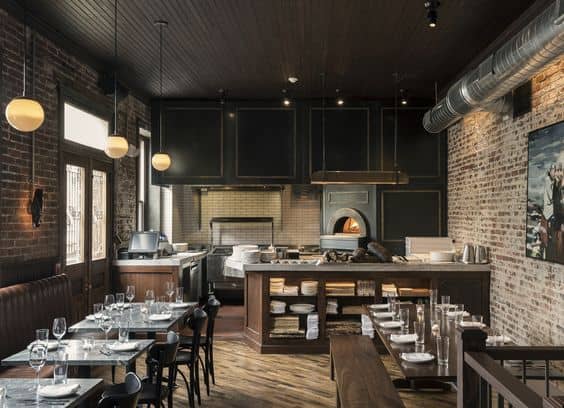When you choose a restaurant, your mind naturally gravitates toward the quality and nature of the food. A restaurant with clever, original, and delicious dishes has a chance of being successful no matter what other efforts they’re making to succeed. However, there’s a secondary set of considerations that can help attract new customers, and certainly keep your existing customers coming back for more—it’s the interior design of your restaurant, and it has more of an impact on customer dining habits than you might realize.




The Most Important Design Considerations
These are some of the most important design choices you can make in the restaurant industry:
- The shape of the building. You won’t have much control over the shape of the building once you get it, but on the inside, you can change how that space is perceived. If you’re in the process of buying a location for your restaurant, you can garner some control over its architecture, such as choosing wide, open areas or closer, more intimate settings. On the inside, you can build new walls or tear walls down to adjust this feeling, or accent the walls, floors, and ceiling to emphasize certain features of the building’s shape.
- The seating view. Everything the customer sees while sitting down, from the tops of the tables to your decorated placemats, will have an impression on them. This is potentially the most important part of the restaurant, since it’s where the customer will be spending the most time, and where their attention will be while they’re waiting for their food. You’ll want something that’s welcoming and comfortable, but also something unique, which shows off the core characteristics of your brand.
- The décor on the walls. Your restaurant probably has several interior walls, so take advantage of them as a showcase for your brand personality. Are you looking for a clean, formal vibe? Keep the decorations to a minimum, and emphasize the white space with dignified accents. Are you trying to seem fun and provide lots of conversation points? Kitsch can be your friend here. Want a more naturalistic vibe? Try showcasing plants.
- The furniture. Your furniture will speak volumes about the nature and quality of your restaurant. Comfort is an important consideration; how will guests feel when they’re sitting here for half an hour or more? But external design and visibility also matter. Is your furniture handcrafted and ornately decorated? Is it minimalistic and modern?
- The lighting. Don’t underestimate the power of lighting in a restaurant, either. A handful of lighting choices can instantly elevate or destroy the image you’ve been trying to build. For example, are you looking for a quiet, romantic setting aimed at mature adults? Bright lighting or multicolored lights could ruin that. Consider brightness, color, placement, and the number and type of light fixtures as well.
- The music. Though not an element of visual design, the music can work in tandem with the lighting to secure the ambiance you want to project. Consider not only the genre of music you want to play, but the volume, and the quality of the speakers you’re going to play it on. If you’re establishing an active, young setting, loud music that changes based on the day could work; if you’re seeking a more formal environment, something softer and smoother is a must.
- The floors. Finally, don’t neglect the floors of your restaurant. Are they hardwood? Are they patterned or colored in any way? For practical reasons, you’ll want something easy to clean, but think about how the visual elements fit into the rest of your environment.


The Power of a Brand
There are some key elements that should be present in your design, no matter what your restaurant is selling or how you want your brand to be perceived; for example, all restaurants should look clean and sanitary throughout the building. Other than those basic fundamentals, your choices shouldn’t be based on hard “corrects” or “incorrects,” but rather the subjective qualities you want to represent your brand. Research and get to know your audience before you make any permanent changes.

